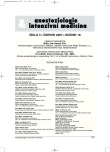The evolution of airway management
Vývoj péče o průchodnost dýchacích cest
Autor uvádí nejdůležitější vývojové stupně, které předcházely soudobým standardním pracovním postupům k spolehlivému zajištění volné průchodnosti dýchacích cest v anesteziologii a při resuscitační péči. V 19. století byla hlavní metodou pro jejich zajištění tracheostomie, kanylace trachey a tamponáda nad vchodem do hrtanu před zahájením celkové anestezie a operace. Trendelenburg (1869) použil poprvé k utěsnění kanyly nafukovací těsnicí manžetu. MacEwen jako první zavedl do laryngu tracheální rourku ústy (1878). Jejich postup zdokonalil K. Maydl v Praze (1893). Magill a Rowbotham vypracovali ve 20. letech 20. století dobře využitelnou metodu endotracheální intubace při laryngoskopii a nazotracheální intubace poslepu. Guedel navrhl ve stejné době plně vyhovující tvar ústních a nosních vzduchovodů a společně s Watersem zavedli pryžovou manžetovou tracheální rourku. Macintosh v roce 1943 přispěl zásadně ke zlepšení techniky laryngoskopie před intubací trachey uvedením laryngoskopu se zahnutou lžící. Díky zavedení nitrožilní anestezie thiopentalem J. Lundym a R.Watersem v roce 1934 a svalových relaxancií H. Griffithem v roce 1942 bylo možno vypracovat v 50. letech minulého století dodnes plně vyhovující šetrný způsob úvodu do celkové anestezie s endotracheální intubací.
Klíčová slova:
laryngoskopie – intubace trachey – laryngoskop – thiopental – svalová relaxancia
Authors:
J. Pokorný
Authors‘ workplace:
Komise pro historii oboru České společnosti anesteziologie, resuscitace a intenzivní medicíny ČLS JEP
Published in:
Anest. intenziv. Med., 18, 2007, č. 3, s. 181-186
Category:
History
Overview
This article describes the most important steps of the evolution of the contemporary methods of airway management in anaesthesiology and critical care. In the 19th century the principal method of safeguarding the open airway was tracheostomy, cannulation of the trachea and supralaryngeal tamponade prior to the beginning of general anaesthesia and surgery. Trendelenburg (1869) was the first one to use an inflatable cuff for sealing the tracheostomy cannula. MacEwen introduced inserting the tracheal tube into the larynx through the mouth in 1878. The method was improved by Maydl in Prague (1893). Magill and Rowbotham developed a well usable method of endotracheal intubation and nasotracheal blind intubation in the 1920s. Guedel developed convenient types of nasal and oral airways in the same years. He and Waters reintroduced the cuffed rubber endotracheal tube. Macintosh contributed to the technique of endotracheal intubation by introducing the curved laryngoscope blade in 1943. Thanks to the introduction of the intravenous anaesthetic thiopentone by Lundy and Waters in 1934, and muscle relaxants by Griffith in 1942, it was possible in the 1950s to develop a method for the induction of general anaesthesia with endotracheal intubation still used today.
Key words:
laryngoscopy – tracheal intubation – thiopentone – muscle relaxants
Labels
Anaesthesiology, Resuscitation and Inten Intensive Care MedicineArticle was published in
Anaesthesiology and Intensive Care Medicine

2007 Issue 3
Most read in this issue
- Helium and its role in current medicine
- The evolution of airway management
- Altering the hemodynamics during abdominal aortic aneurysm repair by acute normovolemic hemodilution
- Impact of addition of synbiotics (Synbiotic 2000 Forte) to enteral nutrition on the course of MODS, occurrence of sepsis, immune status and gut function in long-term critically ill patients
